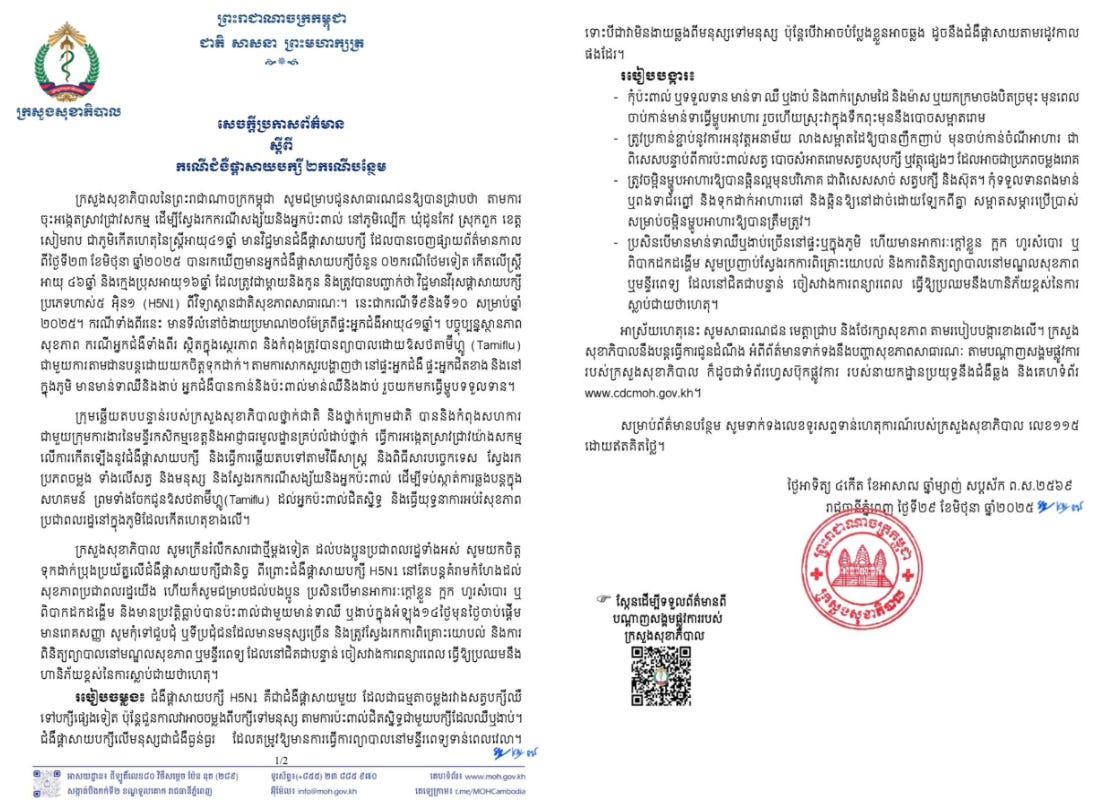In a follow-up from Cambodia, the Ministry of Health in the kingdom report two additional human H5N1 avian influenza cases from patients in Lek village, Daun Keo commune, Puok district, Siem Reap province, the same place as the case reported last week.
The patients are a 46-year-old woman and a 16-year-old boy, who were mother and child and were confirmed to be positive for the H5N1 bird flu virus by the National Institute of Public Health.

The Ministry of Health of the Kingdom of Cambodia says in a press release that these are the 9th and 10th cases reported in Cambodia this year; however, the tally from Outbreak News Today has it at the 8th and 9th cases. We are waiting for clarification on the numbers.
Officials say the two cases live approximately 20 meters away from the 41-year-old patient’s home (the 7th case reported on June 23).
Currently, the health status of both patients is stable and they are being treated with Tamiflu with continued close monitoring. Investigations revealed that there were sick and dead chickens in the patient’s home, the neighbor’s home, and in the village. The patient had handled and touched sick and dead chickens and cooked them.
According to the World Health Organization, H5N1 is one of several influenza viruses that causes a highly infectious respiratory disease in birds called avian influenza (or "bird flu"). Infections in mammals, including humans, have also been documented.
H5N1 influenza virus infection can cause a range of diseases in humans, from mild to severe and in some cases, it can even be fatal. Symptoms reported have primarily been respiratory, but conjunctivitis and other non-respiratory symptoms have also been reported. There have also been a few detections of A(H5N1) virus in persons who were exposed to infected animals or their environments but who did not show any symptoms.
Subscribe to Outbreak News TV on YouTube
Almost all cases of H5N1 virus infection in people have been associated with close contact with infected live or dead birds, or H5N1-contaminated environments, for example live bird markets. There have been some instances of spread from infected mammals to humans as well. While there may have been some cases that were not detected, the virus does not seem to easily infect humans or spread from person to person, based on the current knowledge and understanding.
Since 2003, more than 900 human cases have been reported globally, with approximately half the cases being fatal.




